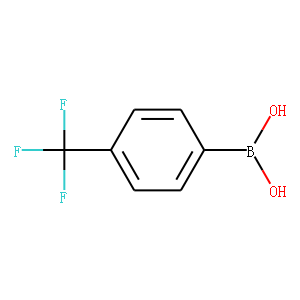| Reference | </br>1: Cao KS, Bian HX, Zheng WH. Mild arylboronic acid catalyzed selective [4 + 3] cycloadditions: access to cyclohepta[b]benzofurans and cyclohepta[b]indoles. Org Biomol Chem. 2015 Jun 21;13(23):6449-52. doi: 10.1039/c5ob00653h. Epub 2015 May 14. PubMed PMID: 25971529.</br>2: Christinat N, Scopelliti R, Severin K. Boron-based rotaxanes by multicomponent self-assembly. Chem Commun (Camb). 2008 Aug 21;(31):3660-2. doi: 10.1039/b805437a. Epub 2008 Jun 11. PubMed PMID: 18665291.</br>3: Maki T, Ishihara K, Yamamoto H. 4,5,6,7-Tetrachlorobenzo[d][1,3,2]dioxaborol- 2-ol as an effective catalyst for the amide condensation of sterically demanding carboxylic acids. Org Lett. 2006 Mar 30;8(7):1431-4. PubMed PMID: 16562909.</br>4: Westmark PR, Smith BD. Boronic acids facilitate the transport of ribonucleosides through lipid bilayers. J Pharm Sci. 1996 Mar;85(3):266-9. PubMed PMID: 8699326.</br>5: Jordan F, Polgar L, Tous G. Proton magnetic resonance studies of the states of ionization of histidines in native and modified subtilisins. Biochemistry. 1985 Dec 17;24(26):7711-7. PubMed PMID: 3912007.</br>6: Poole CF, Johansson L, Vessman J. Formation of electron-capturing derivatives of alprenolol by transboronation: application to the determination of alprenolol in plasma. J Chromatogr. 1980 Jun 27;194(3):365-77. PubMed PMID: 7391216. </br> </br>
|

